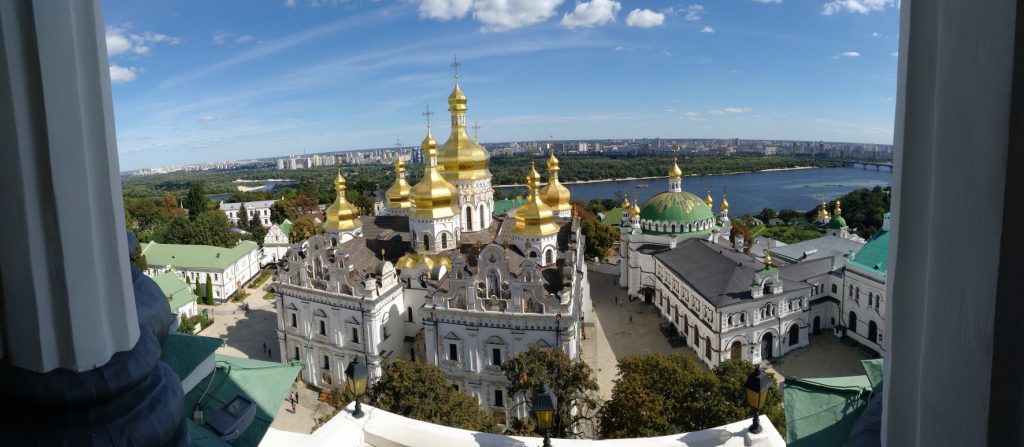I was fortunate enough to be invited to Kyiv to keynote (video) the local Open Source Developer Network conference. Actually, I had two presentations. The opening keynote was on building a more secure operating system with fewer active security measures. I presented a few case studies why I believe that GNOME is well positioned to deliver a nice and secure user experience. The second talk was on PrivacyScore and how I believe that it makes the world a little bit better by making security and privacy properties of Web sites transparent.

The audience was super engaged which made it very nice to be on stage. The questions, also in the hallway track, were surprisingly technical. In fact, most of the conference was around Kernel stuff. At least in the English speaking track. There is certainly a lot of potential for Free Software communities. I hope we can recruit these excellent people for writing Free Software.
Lennart eventually talked about CAsync and how you can use that to ship your images. I’m especially interested in the cryptography involved to defend against certain attacks. We also talked about how to protect the integrity of the files on the offline disk, e.g. when your machine is off and some can access the (encrypted) drive. Currently, LUKS does not use authenticated encryption which makes it possible that an attacker can flip some bits in the disk image you read.

Canonical’s Christian Brauner talked about mounting in user namespaces which, historically, seemed to have been a contentious topic. I found that interesting, because I think we currently have a problem: Filesystem drivers are not meant for dealing with maliciously crafted images. Let that sink for a moment. Your kernel cannot deal with arbitrary data on the pen drive you’ve found on the street and are now inserting into your system. So yeah, I think we should work on allowing for insertion of random images without having to risk a crash of the system. One approach might be libguestfs, but launching a full VM every time might be a bit too much. Also you might somehow want to promote drives as being trusted enough to get the benefit of higher bandwidth and lower latency. So yeah, so much work left to be done. ouf.

Then, Tycho Andersen talked about forwarding syscalls to userspace. Pretty exciting and potentially related to the disk image problem mentioned above. His opening example was the loading of a kernel module from within a container. This is scary, of course, and you shouldn’t be able to do it. But you may very well want that if you have to deal with (proprietary) legacy code like Cisco, his employer, does. Eventually, they provide a special seccomp filter which forwards all the syscall details back to userspace.
As I’ve already mentioned, the conference was highly technical and kernel focussed. That’s very good, because I could have enlightening discussions which hopefully get me forward in solving a few of my problems. Another one of those I was able to discuss with Jakob on the days around the conference which involves the capabilities of USB keyboards. Eventually, you wouldn’t want your machine to be hijacked by a malicious security device like the Yubikey. I have some idea there involving modifying the USB descriptor to remove the capabilities of sending funny keys. Stay tuned.
Anyway, we’ve visited the city and the country before and after the event and it’s certainly worth a visit. I was especially surprised by the coffee that was readily available in high quality and large quantities.


